The Cookbook:
Who and How We Want to Be
As a spend down foundation, how we show up and to whom we are accountable are critical to how we think about the kind of funder we want to be and the steps we take to live that vision. We invite you to pull up a virtual chair to hear what we are testing, trying, and aspiring to in our foundation kitchen. As part of this endeavor, we participated in the Center for Effective Philanthropy (CEP)’s Grantee Perception Report (GPR) to help us better understand grantee partners’ experiences in working with us.
The results are motivating us to grow our grant-making processes and practices, design new approaches to working with grantee partners who identify as women, build more trusting relationships, and develop how we go beyond the grant in step with grantee partners.
Recipe Testing: What We Are Trying
Feedback from the GPR contributed to a series of new and underway endeavors at Stupski to improve our grantmaking practices, including:
- We are clarifying how we understand impact and success so that grantee partners know what to expect of us.
- We have simplified our grant applications and revamped our grant-making process to be more relational and less transactional (e.g., we built-in draft proposal checkpoints, reduced approval steps, shifted our average turnaround from several months to a month or less), and shifted our learning approach to be more check-in conversation-based and less report-based.
- We have opened up to new partnerships through open calls for funding in each of our issue areas and are planning future open calls.
- We are making significantly more general operating support and highly flexible grants that support organizations rather than just projects.
- We are making more multi-year commitments to support the kind of time and leadership that deep change requires.
- We are supporting co-learning approaches among grantee partners.
- We are being intentional about connecting with organizations that employ, are informed by, and led by the communities they serve and are partnering with more organizations led by women and Black, Indigenous, Latino, Asian American, Native Hawaiian, Pacific Islander, and Native American people and other people of color.
Sear, Stir, Simmer, and Season: Findings That Struck Us
The lead cooks in our GPR test kitchen included our consultants, Sacha Thompson and Patrick Lee, and myself. Below with two of our program officers, Malila Becton-Consuegra and Sulma Gandhi, we share our reflections on the process and key findings that bubbled to the surface.
Mise En Place: Create Reflective Spaces and Staff Will Step IN
 Gwyneth: I was inspired by how wholly the staff accepted the opportunity to explore more—to turn the questions to ourselves and to sit with the discomforts. We received the results at a time of significant and multidimensional organizational change. As a design team, Sacha, Patrick, and I slowed way down and designed a process rooted in building awareness that met people where they were at. The GPR’s gift is that while there are actions we can take and changes we can make, the true transformation lives in holding the edges and seeking opportunities, always, to show up as our highest and most authentic selves—and growing our organizational processes and practices to keep pace. The GPR gives us the motivation to hold each other accountable to do that together and consistently.
Gwyneth: I was inspired by how wholly the staff accepted the opportunity to explore more—to turn the questions to ourselves and to sit with the discomforts. We received the results at a time of significant and multidimensional organizational change. As a design team, Sacha, Patrick, and I slowed way down and designed a process rooted in building awareness that met people where they were at. The GPR’s gift is that while there are actions we can take and changes we can make, the true transformation lives in holding the edges and seeking opportunities, always, to show up as our highest and most authentic selves—and growing our organizational processes and practices to keep pace. The GPR gives us the motivation to hold each other accountable to do that together and consistently.
Taste Testers: Candid Feedback on Bias Is Crucial
Our consultant, Sacha, reflected on a gender disparity that CEP highlighted in grantee partners’ feedback. Grantee partners identifying as women gave Stupski lower ratings across numerous survey measures including their perceptions of our impact, understanding, candor, openness, and transparency. To build equitable relationships with grantee partners who identify as women, nonbinary, and gender nonconforming, we are listening and making changes based on that feedback.
 Sacha: I was surprised to learn about the gender disparity issue in philanthropy. I’m glad that Stupski staff members carved out time to learn about the issue and assess the Foundation’s practices. During my time consulting with the Foundation, we have continuously worked to improve Stupski’s grant-making practice by gathering and incorporating feedback, and these results gave us a lot of insight to work with. The GPR was a great opportunity to incorporate candid feedback from grantees. So many things have changed at Stupski since the survey went out. While Stupski’s relationships with its grantee partners remain central to its work, the GPR results have provided profound insights that the team will use to improve those relationships.
Sacha: I was surprised to learn about the gender disparity issue in philanthropy. I’m glad that Stupski staff members carved out time to learn about the issue and assess the Foundation’s practices. During my time consulting with the Foundation, we have continuously worked to improve Stupski’s grant-making practice by gathering and incorporating feedback, and these results gave us a lot of insight to work with. The GPR was a great opportunity to incorporate candid feedback from grantees. So many things have changed at Stupski since the survey went out. While Stupski’s relationships with its grantee partners remain central to its work, the GPR results have provided profound insights that the team will use to improve those relationships.
Go for the Michelin Star: To Be About Equity, Up Your Game
 Patrick: It struck me that the three themes we focused on from the results—gender, trust, and nonmonetary support—are all interconnected. Stupski, in comparison with peers, appears to be rated similarly as other funders. For me, for Stupski to be an increasingly equity-focused foundation, it will need to up its game. While being in line with peers is a good starting point, the Foundation should aspire to cultivate deep trust; to have equitable relationships with grantee partners who identify as women, nonbinary, and gender nonconforming; and to be authentic learning partners with grantees. I think about times when grantee partners have expressed appreciation for how Stupski is so different and exhibits a level of trust they don’t see with other funders. That feedback is important but not enough. Unfortunately, a low bar is sometimes set for how foundations show up. Even if a foundation receives positive feedback, there is still a lot of work to be done.
Patrick: It struck me that the three themes we focused on from the results—gender, trust, and nonmonetary support—are all interconnected. Stupski, in comparison with peers, appears to be rated similarly as other funders. For me, for Stupski to be an increasingly equity-focused foundation, it will need to up its game. While being in line with peers is a good starting point, the Foundation should aspire to cultivate deep trust; to have equitable relationships with grantee partners who identify as women, nonbinary, and gender nonconforming; and to be authentic learning partners with grantees. I think about times when grantee partners have expressed appreciation for how Stupski is so different and exhibits a level of trust they don’t see with other funders. That feedback is important but not enough. Unfortunately, a low bar is sometimes set for how foundations show up. Even if a foundation receives positive feedback, there is still a lot of work to be done.
Refine the Menu: Follow Their Lead
 Malila: The GPR pointed us in the direction of clear improvements that we could implement in our grant-making practices right away. We’re reframing reporting requirements to focus on what’s most important to our grantee partners, offering general operating support grants whenever possible, and learning to be responsive by offering capacity building. Although we have a lot to learn, the biggest takeaway for me has been to ask our grantee partners how we are doing and how we can do it better, then listen and follow their lead.
Malila: The GPR pointed us in the direction of clear improvements that we could implement in our grant-making practices right away. We’re reframing reporting requirements to focus on what’s most important to our grantee partners, offering general operating support grants whenever possible, and learning to be responsive by offering capacity building. Although we have a lot to learn, the biggest takeaway for me has been to ask our grantee partners how we are doing and how we can do it better, then listen and follow their lead.
Balance the Sweet and Savory: Design Alliances Together
 Sulma: When I joined the Stupski team, I was thrilled to learn about our GPR process. As a new Hawaiʻi staff member, I am committed to understanding how we show up on our Islands and bridge the historic power imbalance that persists between funders and organizations that seek support. To disrupt that dynamic, we must build alliances based on trust and vulnerability with our communities. That journey takes time, beginning with the thoughtful feedback our partners shared in the GPR and continuing in the way we honor and act upon their insights. As we pursue lōkahi, the Hawaiian word for unity, harmony, oneness, in our privilege of being part of the Islands’ ʻohana (family), we will need to constantly learn from and apply the wisdom our communities share with us.
Sulma: When I joined the Stupski team, I was thrilled to learn about our GPR process. As a new Hawaiʻi staff member, I am committed to understanding how we show up on our Islands and bridge the historic power imbalance that persists between funders and organizations that seek support. To disrupt that dynamic, we must build alliances based on trust and vulnerability with our communities. That journey takes time, beginning with the thoughtful feedback our partners shared in the GPR and continuing in the way we honor and act upon their insights. As we pursue lōkahi, the Hawaiian word for unity, harmony, oneness, in our privilege of being part of the Islands’ ʻohana (family), we will need to constantly learn from and apply the wisdom our communities share with us.
Out of the Frying Pan: What’s Next
The results of our GPR were a compelling call to us to go further and to do so now. We are deeply committed to building trust with grantee partners and making connections with new partners to expand the impact of the investments we make. We want to be the kind of funder who is always in a grantee partner’s court as a resolute champion and thoughtful friend. We care deeply about the communities we live and work in across the San Francisco Bay Area and Hawaiʻi. To put our collective care into meaningful action, we want to ensure we are a relevant and capable partner to our colleagues on the ground. We won’t always get it right, but we are striving and inquiring and receptive to your honest feedback. We also look forward to fielding our second GPR this fall.
Tastemakers: Deep Appreciations
Thank you for the generous time, thoughtfulness, and candid feedback so many of you shared with us. We know these surveys take time and energy from your already busy schedules. Your insights are invaluable to us.
Our partners at CEP—Amber Bradley and Alice Mei—were stellar. Their deep care and commitment to transforming philanthropy through honest feedback were ever-present and deeply rooted. We have grown from our partnership with them.
Dessert! What We’re Reading
Compassion
Centering on Grantee Partners
- 14-part SSIR + GEO Blog Series Putting Grantees First
- Community Engagement
- Direct Feedback
- Firelight Foundation: Guidelines for Interactions With Community-Based Organization Grantees and Their Communities
Grantee Partner Voice
Spending Down
- An End to Philanthropy (for the Love of Humanity – Short Justice Funders Thought Piece
- CEP: Lessons From Limited Life Foundations
Making Foundations Equitably Accessible
Accountability
Being Trust-Based and Equity-Centered
- Trust-Based Philanthropy in 4D
- Resonance Framework
- Evaluation with Aloha
- KA HUAKA‘I Native Hawaiian Educational Assessment
- Funders Share Stories of Change, Part One: Greater Focus on Systemic Inequities & Racial Equity
- Driving Racial Equity in Philanthropy
- The Impact of Putting Equity at the Center of Strategy
- Decolonizing Wealth Project
- Holding Change
- The Sum of Us
The Recipe Writers
Gwyneth Tripp
Gwyneth is the director of grantmaking practice.
Sacha Thompson
Sacha is an independent consultant specializing in human-centered design methodology, facilitation, public-private partnerships, and social justice strategies.
Patrick Lee
Patrick is an independent consultant supporting foundations and nonprofits with learning, evaluation, and strategic planning.
Malila Becton-Consuegra
Malila is a postsecondary success program officer focused in the San Francisco Bay Area.
Sulma Gandhi
Sulma is a health program officer focused in Hawaiʻi.


